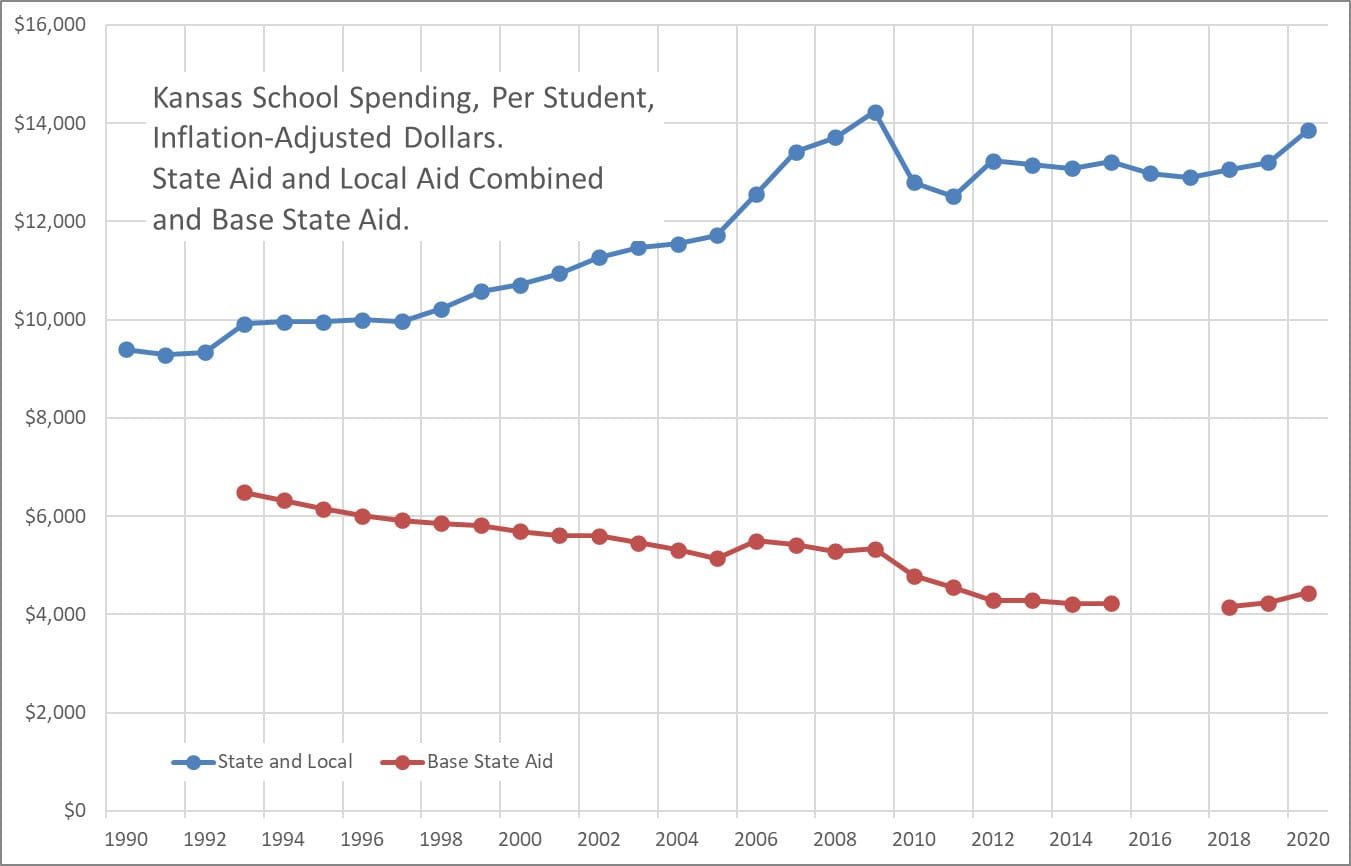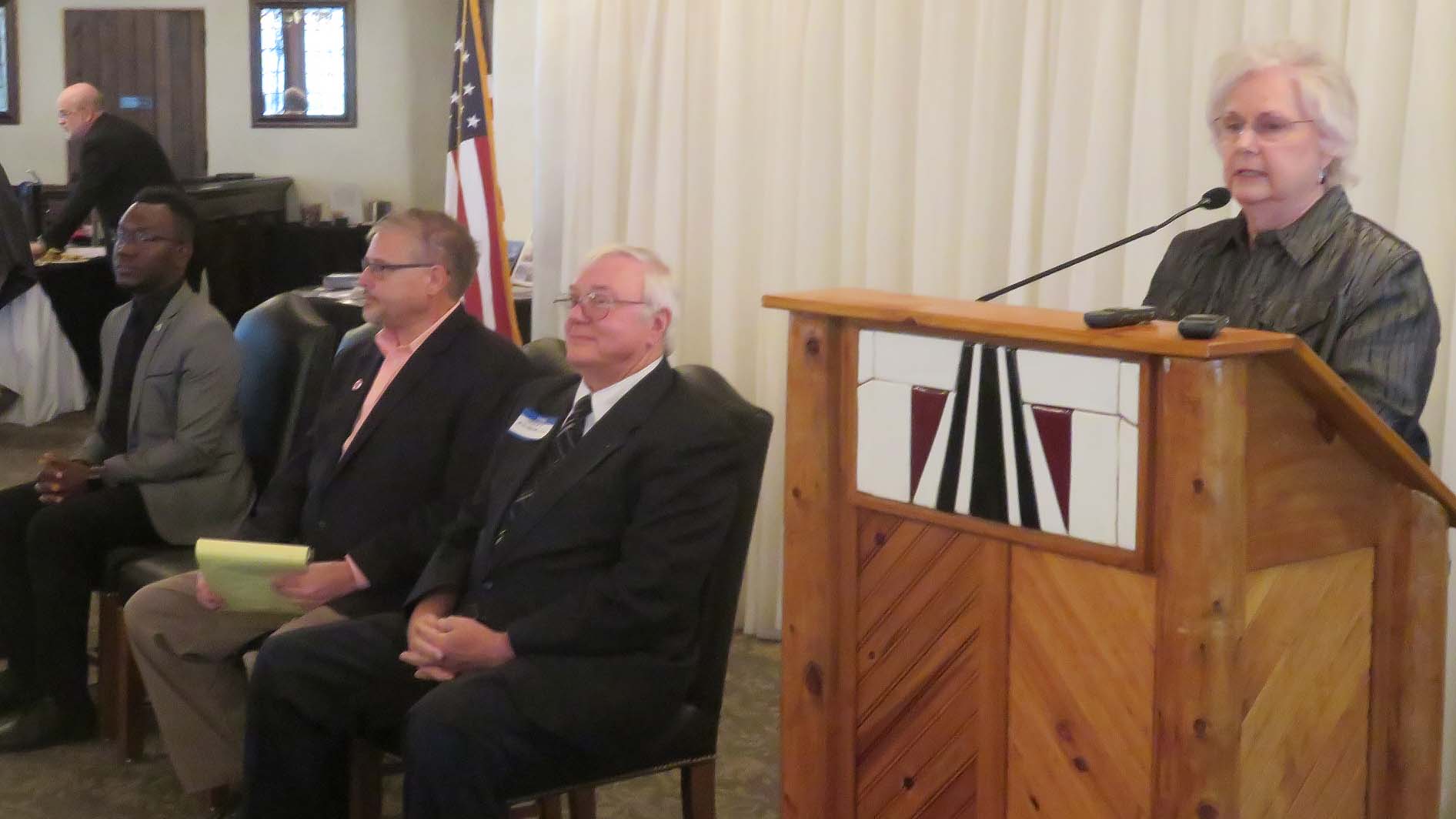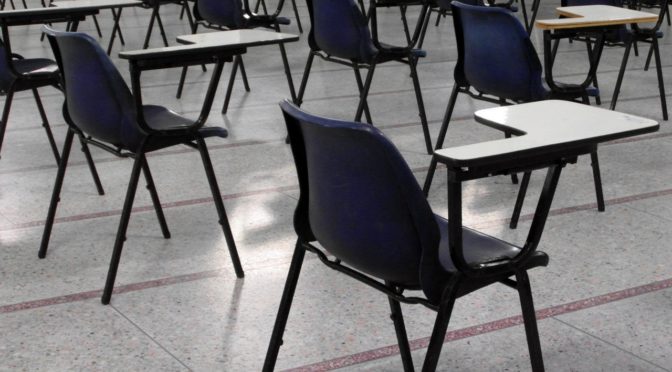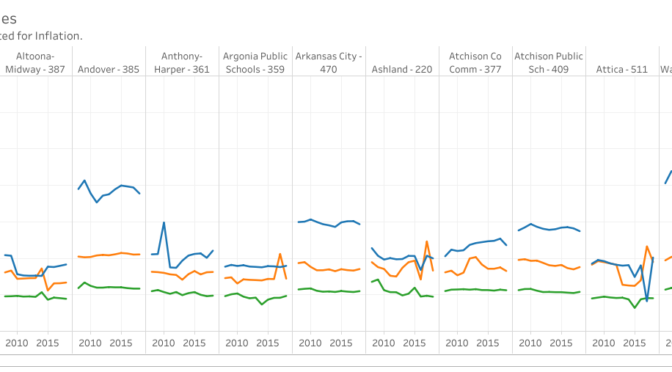Category: Wichita and Kansas schools
-

Kansas school spending, through 2020
Charts of Kansas school spending presented in different forms.
-

Kansas school employment
Kansas school employment rose for the current school year.
-

Performance levels in Wichita schools
There is some good news in the performance level reports for Wichita public schools.
-

Kansas school salaries
Kansas school salaries, visualized.
-

Wichita public schools, by the charts
Data from the annual report for the 2018-2019 school year for USD 259, the Wichita, Kansas public school district.
-

Kansas sees large drop in test scores
Using demographically-adjusted scores, Kansas falls in state rankings of National Assessment of Educational Progress (NAEP).
-

From Pachyderm: Wichita school board candidates
From the Wichita Pachyderm Club this week: Candidates for the board of USD 259, the Wichita public school district. This was recorded October 4, 2019.
-

Wichita public schools, by the charts
Data from the annual report for USD 259, the Wichita, Kansas, public school district.
-

Kansas tax credit scholarship program
An op-ed in the Wichita Eagle regarding school choice prompts uninformed and misinformed comments.
-

Kansas school salaries
An interactive visualization of Kansas school salaries by district and category.
-

Kansas school spending, through 2018
Charts of Kansas school spending presented in different forms.
-

Wichita school spending, according to the Wichita Eagle
A recent editorial by the largest newspaper in Kansas misinforms its readers.